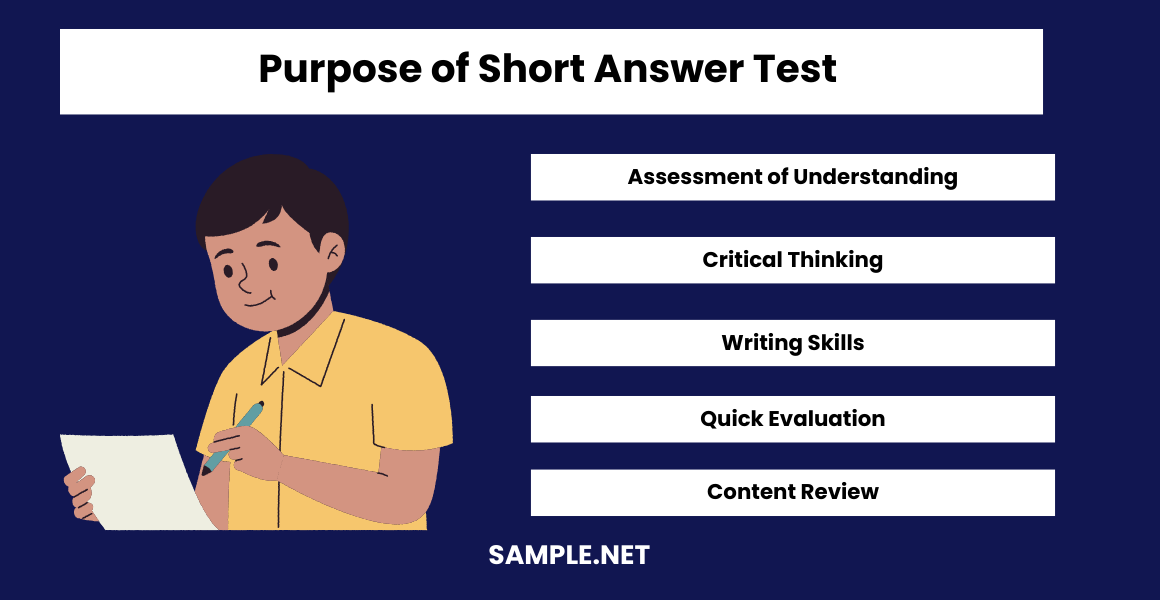Answer Sheet Samples
-
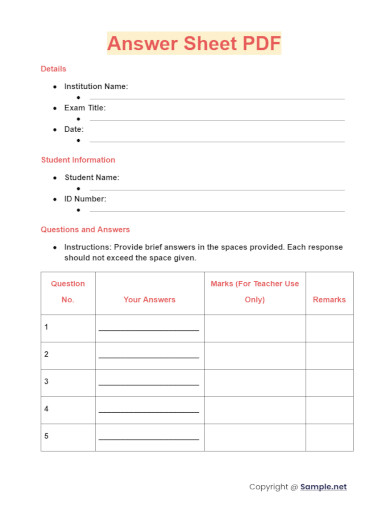
Answer Sheet PDF
download now -
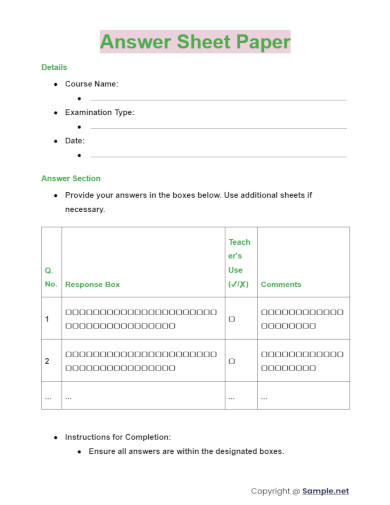
Answer Sheet Paper
download now -
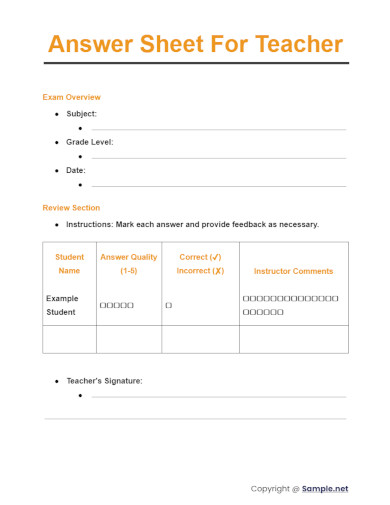
Answer Sheet For Teacher
download now -
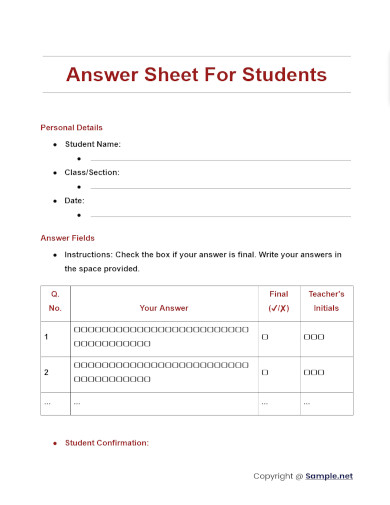
Answer Sheet For Students
download now -

Answer Sheet Template
download now -
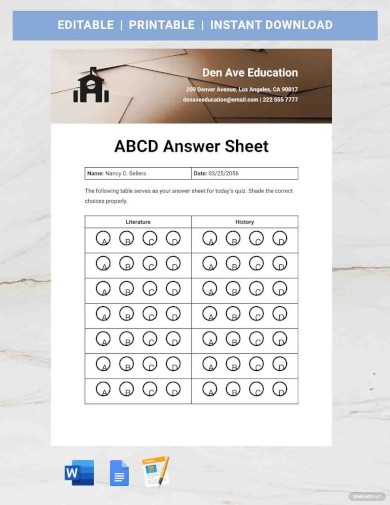
ABCD Answer Sheet Template
download now -
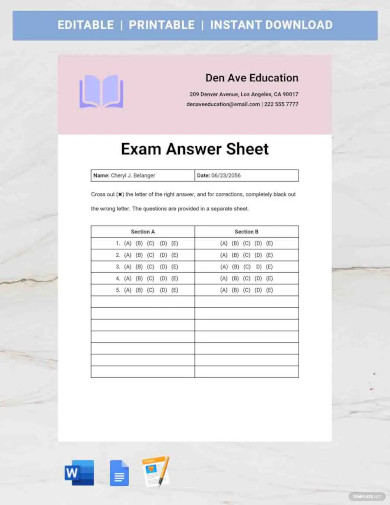
Exam Answer Sheet Template
download now -
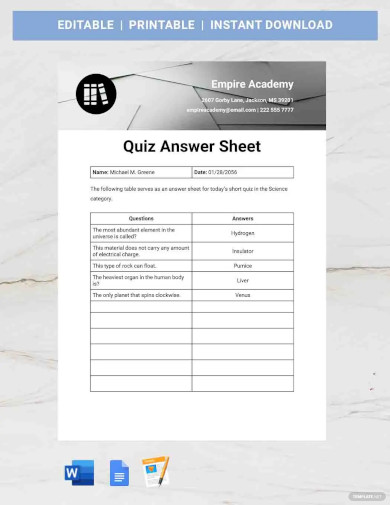
Quiz Answer Sheet Template
download now -
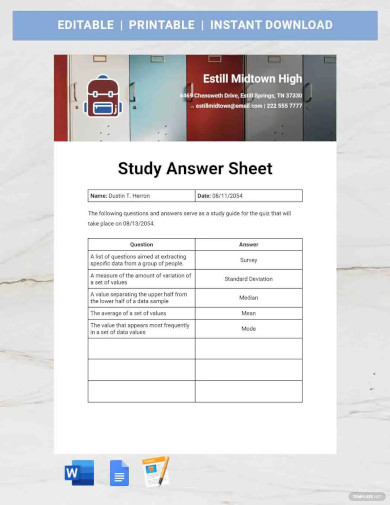
Study Answer Sheet Template
download now -

Question Answer Sheet Template
download now -
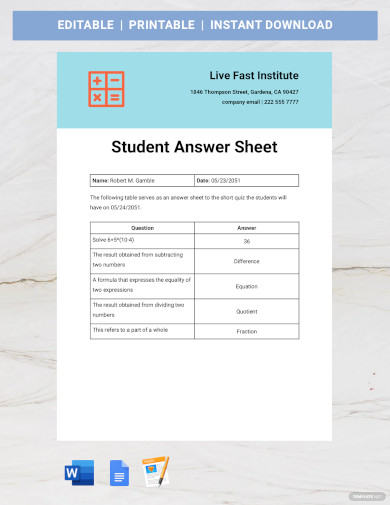
Student Answer Sheet Template
download now -
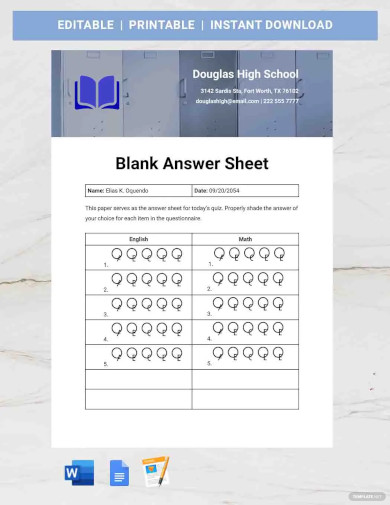
Free Blank Answer Sheet Template
download now -
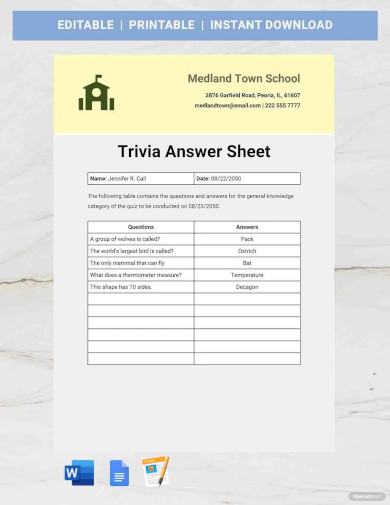
Free Trivia Answer Sheet Template
download now -
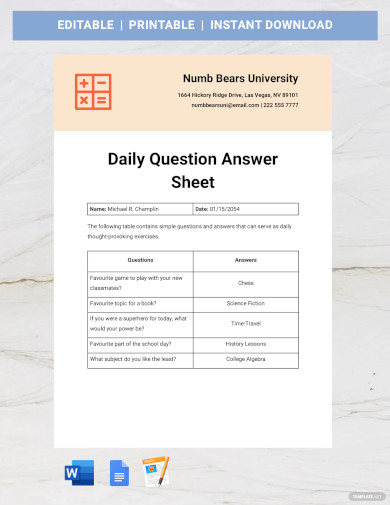
Daily Question Answer Sheet Template
download now -
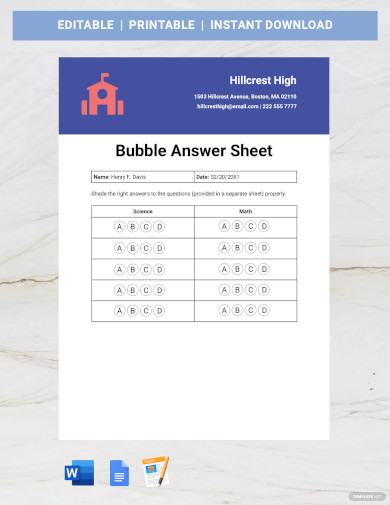
Free Bubble Answer Sheet Template
download now -
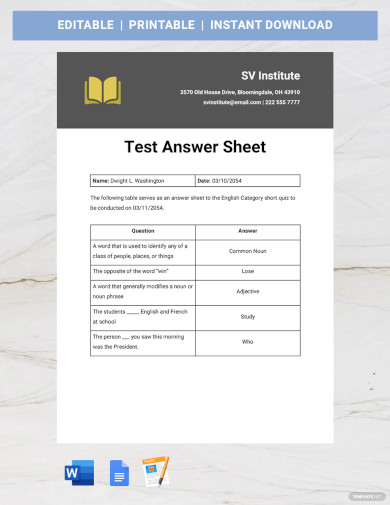
Free Test Answer Sheet Template
download now -
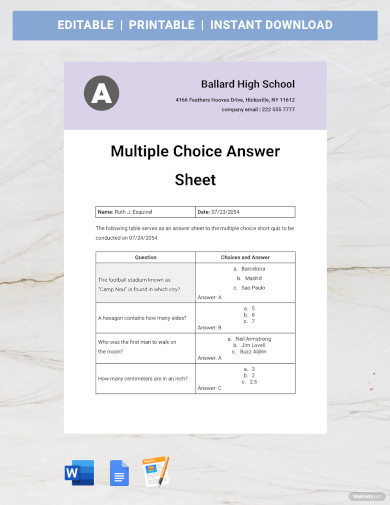
Multiple Choice Answer Sheet Template
download now -

Sample Answer Sheet Template
download now -
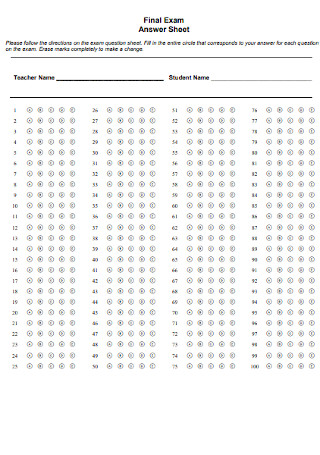
Final Exam Answer Sheet
download now -

Multiple Choice Practice Answer Sheet
download now -
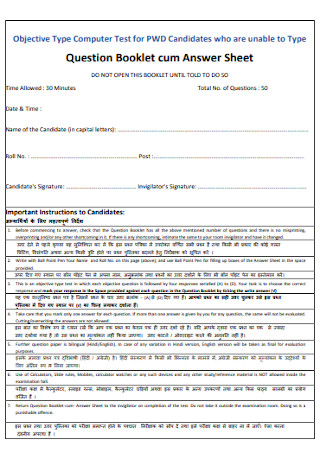
Question Booklet Answer Sheet
download now -

Written Test for Answer Sheet
download now -
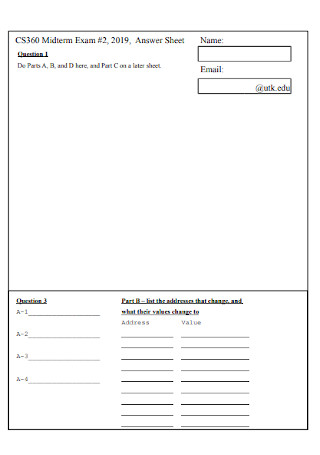
Sample Exam Answer Sheet
download now -
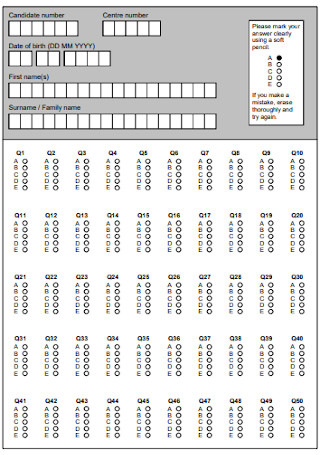
Skills Assessment Bubble Answer Sheet
download now -

Supplementary Multiple Choice Answer Sheet
download now -
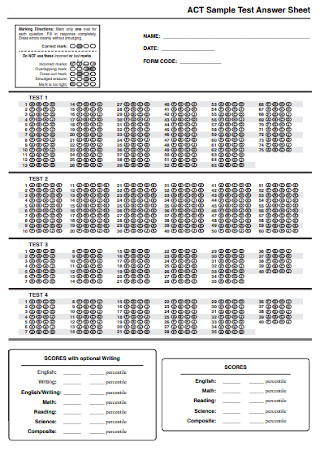
Sample Numbered Test Answer Sheet
download now -

Model Answer Sheet
download now -
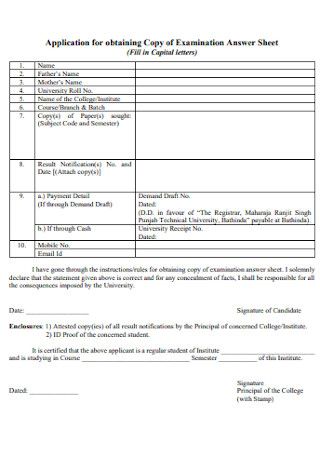
Blank Examination Answer Sheet Example
download now -
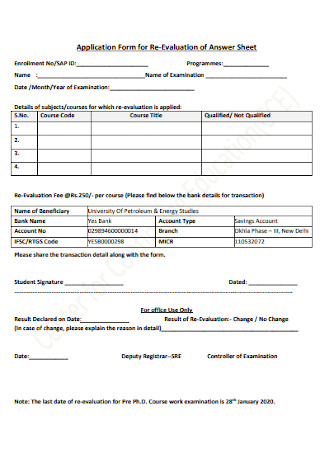
Re-Evaluation of Answer Sheet
download now -
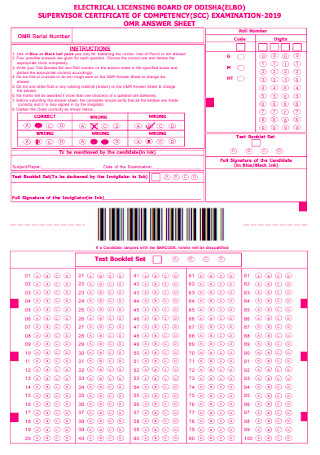
English OMR Answer Sheet
download now -
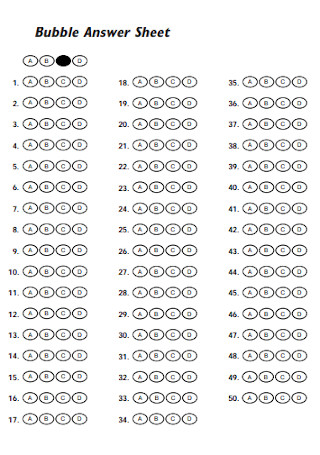
Sample Bubble Answer Sheet
download now -
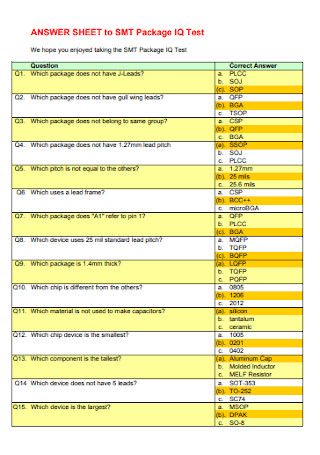
Simple Answer Sheet
download now -

Standard Practise Answer Sheet
download now -

CBSE Computer Science Answer Sheet
download now -
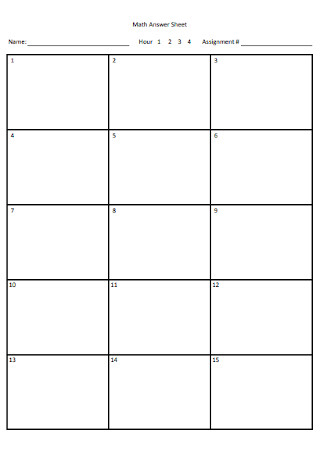
Math Paper Answer Sheet
download now -

Line Scavenger Hunt Answer Sheet
download now -

School Quiz Answer Sheet
download now -
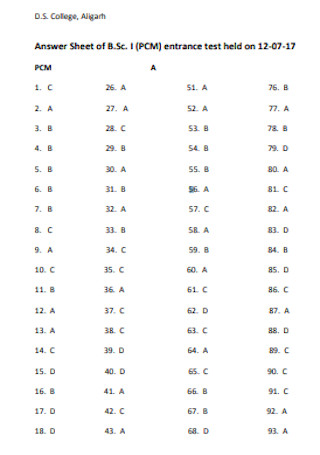
College Board Answer Sheet
download now -
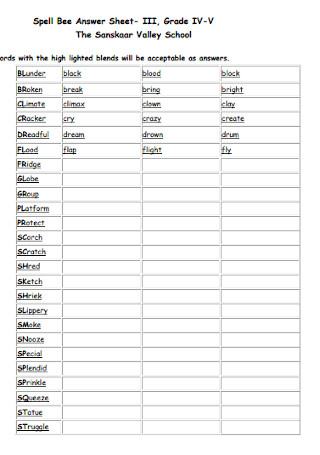
Spell Bee Answer Sheet
download now -

Training Knowledge Assessment Answer Sheet
download now -
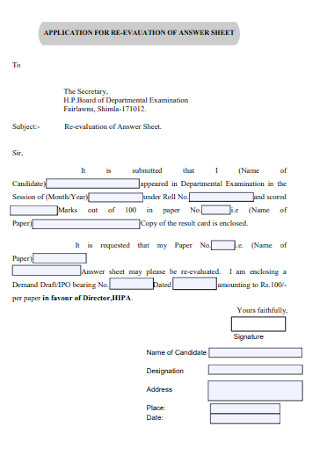
Basic Re Evaluation of Answer Checklist
download now -
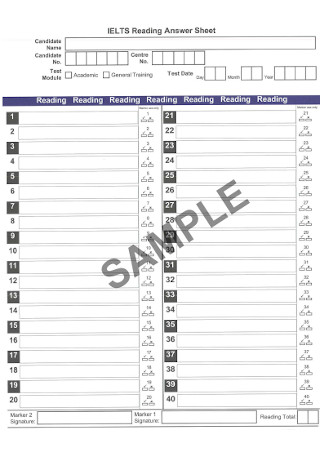
Reading Answer Sheet
download now -
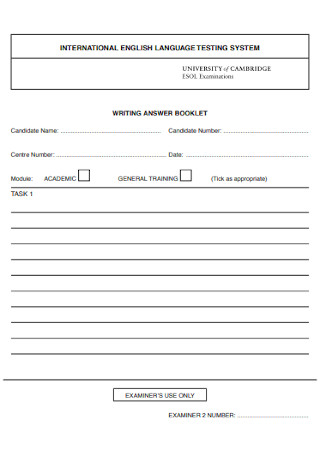
English Writing Answer Checklist
download now -
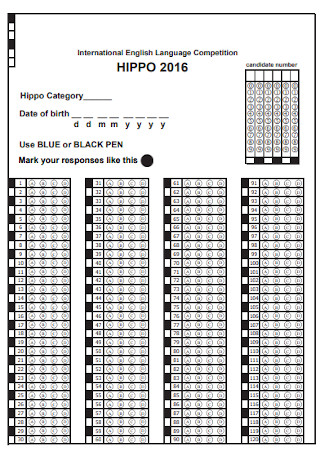
Language Competition Answer Sheet
download now -
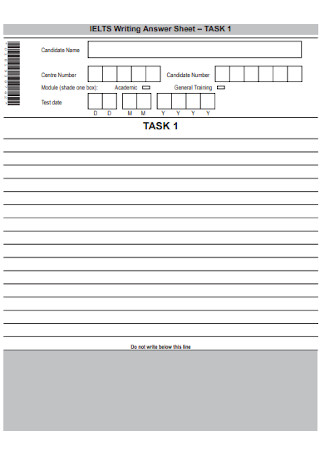
Assessment Writing Answer Sheet
download now -
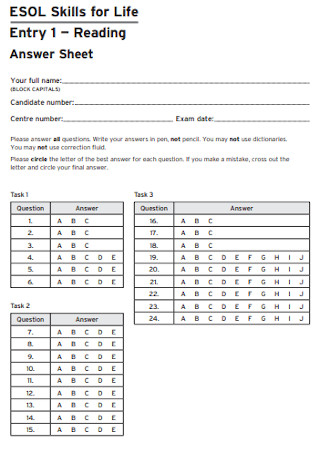
Sample Reading Answer Sheet
download now -
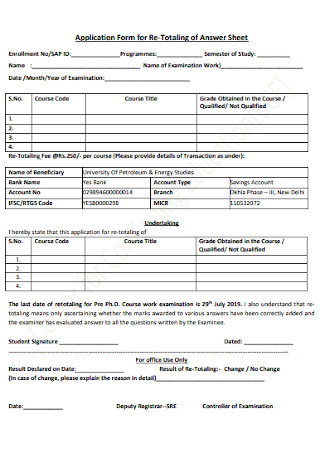
Re Totaling of Answer Sheet
download now -
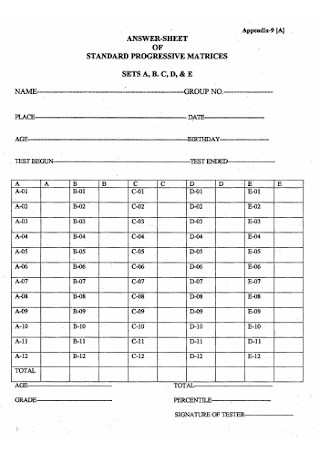
Standard Progressive Answer Sheet
download now -
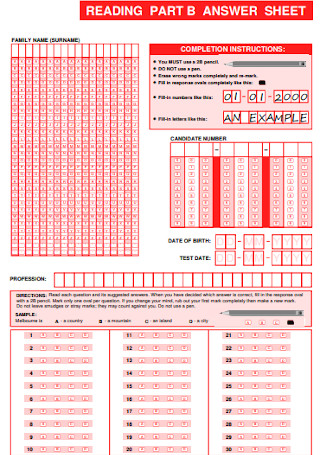
Answer Sheet Layout
download now -
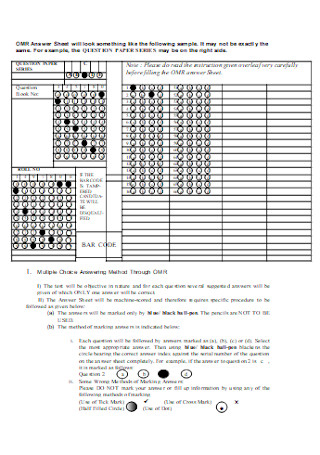
Answer Sheet Format
download now
FREE Answer Sheet s to Download
Answer Sheet Format
Answer Sheet Samples
What is Answer Sheet?
Take the Test: What Are the Answer Sheet Elements?
When to Use Answer Sheets
How to Create an Answer Sheet
What is a bubble answer sheet?
What is the purpose of an answer key?
What makes an effective worksheet?
What is the Purpose of Answer Sheets?
How Do You Get a Class to Answer Questions?
How to Start an Answer?
How Do You Write an Answer to a Petition?
How to Make a Multiple Choice Answer Sheet in Word?
Why Use the Question and Answer Method?
What is the Purpose of Short Answer Test?
How to Get an Answer Sheet?
What Does Question and Answer Format Mean?
How to Structure an Answer?
What is a Short Answer Called?
What Does Answer Mean in Writing?
What is the Free App to Find Answers?
How Long is a Short Answer Question?
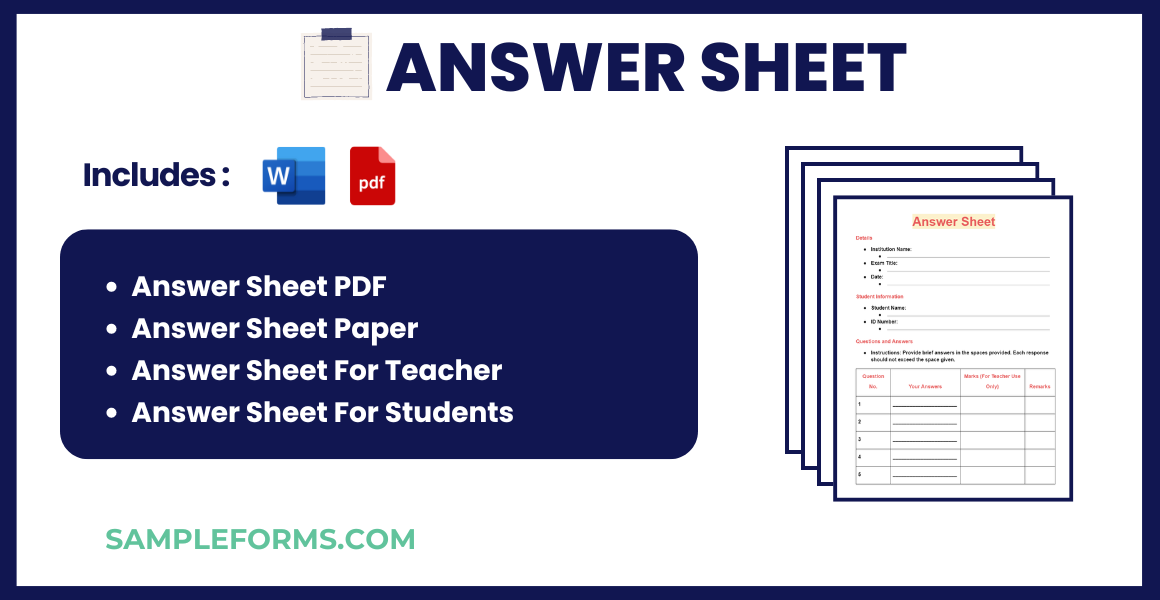
Answer Sheet Format
Header
- Name of Institution: The name of the school or institution.
- Subject: The subject of the examination.
- Date: Date of the examination.
Answer Fields
- Question Number: Clearly numbered sections for each question.
- Space for Answers: Provide ample space for students to write their answers.
- Instructions: Specific instructions for answering (e.g., word limit, points per question).
Footer
- Student Name and ID: Space for the student’s name and identification number.
- Signature: Area for the student’s signature to verify the completion of the test.
What is Answer Sheet?
An answer sheet is a document used primarily in examination settings to record answers to questions. It’s typically structured to facilitate easy marking and can vary from simple checkboxes for multiple-choice questions to lined spaces for written responses. The precise layout helps in minimizing errors in recording responses, ensuring that each answer aligns correctly with the corresponding question. Answer sheets streamline the process of evaluating large volumes of responses quickly and efficiently, making them indispensable in educational and assessment contexts.
According to a survey, 56.6 million students attended elementary, middle, and high school in the US last 2019.
Meanwhile, NCES added that around 19.9 million students attend colleges or universities in America as of fall 2019.
Also, National Public Radio reported that American high school students take a lot of standardized exams, but compared to the teens worldwide, the stakes are even higher.
Why Do We Take Tests?
Yes, answer sheets are essential. But why do people have to take tests in the first place? Teachers are even aware that specific tests can be quite challenging for students, so why give such exams? Tests aren’t for naught. A test is a measuring tool regarding how well students have learned in class. Pupils benefit from exams to know their current performance and grades after checking. And at the same time, teachers are helped by being aware of how to grade each student. You may also see Business Fact Sheet
Who Prepares the Answer Sheets?
Generally, teachers prepare the answer sheet. But anyone can create answer sheets if they plan to use such documents for tests, surveys, and other applications that require answering. And the person assigned to create the sheet must know which document the answer sheet belongs to. Otherwise, things might not match, like when you prepared a multiple-choice answer sheet for a test in the identification form. You may also see Expense Tracking Sheet
Take the Test: What Are the Answer Sheet Elements?
What does an answer sheet consist of? Those documents might vary from one application to another, but there are common aspects to realize too. And those aspects shape a whole answer sheet. So what are they? Here are the elements often found in a standard answer sheet:
When to Use Answer Sheets
You already know that an answer sheet’s function is not merely limited to school tests. But what are some of these examples in other applications? In this section, we outlined some common examples of when to use answer sheets. You may also see Income Statement and Balance Sheet
Board Exams
With over 19.9 million students who attended colleges or universities in America last 2019, according to NCES’s survey, many took their board exams too. And that board exam is one of the nerve-racking experiences to face by a college student. Answer sheets are also at play during the examination. However, the directions are much stricter compared to regular quizzes in school because the board exam already decides if one should become a licensed professional or not. You may also see Research Information Sheet
Research Surveys
If you conduct research surveys, then you would know that the questionnaires used can also be partnered with answer sheets. Thus, the sheets record every answer to evaluate for research. And the challenge among researchers is to ensure they used the right questions, criteria, and respondents to assess every answer.
Employment Tests
Training and job interviews are usually the steps taken in a job application. But for some companies, they implement tests like in an entrance exam. And similar to most tests, answer sheets are at play. The purpose of employment tests is to check if applicants are knowledgeable or experienced enough to qualify for the work standards. You may also see Inventory Sheet
Profiling
Not all tests are meant for checking someone’s knowledge or academic skills. In other instances, tests are for profiling. And typical examples are a personality test and a personal background form. Sometimes what answer sheets require are simply your name, Contact Number, address, and other facets not typically asked in academic exams. You may also see Bowling Score Sheet
How to Create an Answer Sheet
Since you are already familiar with the answer sheet’s definition, elements, and typical applications, let us proceed to the main dish. How do you make an answer sheet? Don’t worry because it is not as difficult as you might think. Refer to this step-by-step list on how to make your answer sheet effectively:
Step 1: Refer to the Activity Sheet
You will only have a clue about the number of items, type of test, and other significant details to add in the answer sheet after seeing the main activity or questionnaire sheet. And don’t forget that having errors in the questionnaire already indicates that your answer sheets may be wrong too. Study the activity form carefully because the answer sheet you create might contradict to the questionnaire. And when you finish studying, slowly draft your answer sheet. You may also see Term Sheet
Step 2: Insert the Answer Sheet Elements
Can you still recall those elements of an answer sheet earlier? Slowly insert them individually in the form. And to ensure you cannot forget every detail, create a checklist to ensure you have everything covered for your answer sheet. Hence, you start from the title to the options for answers. And have you tried downloading from our sample answer sheet templates already? You will see the best examples of how the sheets look from there. You may also see Interview Summary Sheet
Step 3: Match the Numbered Order and Multiple Choices
A typical error among answer sheets is when the numbered order did not match the multiple choices. For example, the first item listed in the document might be too far from the given options. And what is even worse? Sheets that don’t have a sense of measurement. You can see that example among answer forms where you get confused if the multiple choices provided refer to the first item or the second one because of poor placement. You may also see Tracking Sheet
Step 4: Adjust the Format
The sample templates available for download here are also editable. So take this opportunity to tweak the templates. Do you want to use the sheet in PDF or MS Word? Also, decide if you wish to present the answer sheet lengthwise or horizontally. The presentation is up to you. But in other cases, there are standards to follow, particularly in stricter tests. But as much as possible, people must not have a hard time understanding the format. You may also see Property Fact Sheet
Step 5: Observe Clarity
Lastly, it is no question that answer sheets should be clear. And clarity works in two ways. First, the printed sheets must be legible. By that, every word, number, or figure inside should be clear to the naked eye. You are only increasing the difficulty of exams if students still have to squint their eyes in reading or finding where to write. And second, avoid vague words and work instruction. Students might go wrong in answering because of failing to understand unclear directions.
What is a bubble answer sheet?
Bubble answer sheets are used in multiple-choice tests. The sheets are referred to as bubbles because of the circles which students must shade to indicate their answers. An example is an answer sheet that contains circles under the letters A, B, C, and D. You may also see Cleaning Bid Sheet
What is the purpose of an answer key?
If answer sheets are what examinees use to jot down their answers, then answer keys contain the correct answers. And the answer key is a guide used while correcting every student’s answers. But for some answer keys, tutorials are included to conduct evaluation reports properly.
What makes an effective worksheet?
An answer sheet is effective if its content correlates to the activity sheet, meaning the number of items and choices match for both sheets. Moreover, you can tell if answer sheets are effective if you followed the steps on how to make those properly. And if those documents contain the essential elements discussed earlier. You may also see Corporate Fact Sheet
What is the Purpose of Answer Sheets?
Answer sheets streamline the collection and assessment of responses for easy and accurate evaluation.
- Standardization: Ensures uniformity in how responses are recorded and assessed.
- Efficiency: Speeds up the marking process, crucial in settings like large classrooms.
- Accuracy: Reduces human error in recording answers, critical in standardized testing.
- Analysis: Facilitates easier data analysis and result compilation, important for generating a Country Fact Sheet.
- Archiving: Provides a reliable method for storing answers, which can be referenced later.
How Do You Get a Class to Answer Questions?
Engaging a class effectively ensures students are attentive and responsive during lessons.
- Interactive Techniques: Use tools like polling or quizzes to encourage participation.
- Clear Instructions: Ensure questions are clear and understandable to avoid confusion.
- Inclusive Participation: Rotate asking questions to involve all students, preventing dominance by a few.
- Feedback Mechanism: Provide immediate feedback to keep students motivated.
- Visual Aids: Utilize visual aids or an Expense Sheet to illustrate complex questions better.
How to Start an Answer?
Starting an answer effectively can set the tone and clarity for the response.
- Read the Question Carefully: Ensure understanding of what is being asked.
- Plan Your Answer: Outline your thoughts before starting to write.
- Introduction Sentence: Begin with a clear, concise statement related to the question.
- Reference the Question: Link back to the question to show relevance.
- Preview Your Points: Give a brief preview of what your answer will cover, similar to a Cover Sheet.
How Do You Write an Answer to a Petition?
Responding to a petition requires clarity and adherence to legal or formal standards.
- Understand the Petition: Thoroughly read to grasp the specifics of the claim.
- Legal Advice: Consider consulting legal counsel if necessary.
- Formal Response: Start with a formal structure, similar to a Fax Cover Sheet, addressing the points raised.
- Evidence and Facts: Provide evidence and facts to support your response.
- Review and Submit: Ensure the response is error-free before submission.
How to Make a Multiple Choice Answer Sheet in Word?
Creating a multiple-choice answer sheet in Word involves formatting and organization.
- Template Setup: Open a new document and select a template that suits the quiz’s layout.
- Question and Options: Input questions and multiple-choice options, using tables for alignment.
- Answer Bubbles: Insert circles or boxes for answers, ensuring they are clear and well-spaced.
- Instructions Section: Provide clear instructions at the top of the sheet.
- Header and Footer: Include headers or footers for information like the name, date, or a Scholarship Score Sheet.
Why Use the Question and Answer Method?
The question and answer method fosters active learning and ensures students engage with the material effectively.
- Enhanced Engagement: Keeps students actively involved and attentive.
- Immediate Feedback: Allows for immediate clarification and feedback, enhancing understanding.
- Learning Reinforcement: Helps reinforce learning through repeated exposure and revision.
- Skills Development: Develops critical thinking and public speaking skills among learners.
- Assessment Tool: Acts as a quick and effective assessment tool, aligning with strategies in a Company Sheet.
What is the Purpose of Short Answer Test?
Short answer tests challenge students to express knowledge in their own words, enhancing comprehension and recall.
- Assessment of Understanding: Tests ability to recall and apply knowledge rather than just recognition.
- Critical Thinking: Encourages students to think critically and articulate responses.
- Writing Skills: Improves writing skills by requiring concise, clear answers.
- Quick Evaluation: Allows teachers to quickly assess students’ grasp of material.
- Content Review: Effective for reviewing or summarizing topics, noted in a Product Fact Sheet.
How to Get an Answer Sheet?
Obtain an answer sheet by downloading templates from educational websites or creating a custom version in a word processor, suitable for a Project Fact Sheet.
What Does Question and Answer Format Mean?
The question and answer format is a structured method where information is presented through direct questions followed by concise answers, often used in a Financial Fact Sheet.
How to Structure an Answer?
Structure an answer effectively by introducing the main idea, elaborating with details, providing examples, and concluding with a summary, much like formatting a One Page Fact Sheet.
What is a Short Answer Called?
A short answer is typically called a response or reply. It’s brief and directly addresses a specific question, similar to entries in a Blood Pressure Log Sheet.
What Does Answer Mean in Writing?
In writing, an answer is a written response or explanation to a question posed, aiming to clarify or provide information, akin to detailing in a Real Estate Fact Sheet.
What is the Free App to Find Answers?
Free apps like Quizlet or Wolfram Alpha help users find answers to academic and homework-related questions, useful tools similar to a Non-Profit Fact Sheet.
How Long is a Short Answer Question?
A short answer question typically requires a response of one paragraph or less, generally about 50-80 words, comparable to the brief entries in a Budget Sheet.
In conclusion, answer sheets are an essential component of the assessment process, providing a standardized method for collecting and analyzing responses. They play a pivotal role not only in educational assessments but also in business and research settings where accurate data collection is crucial. This article provides insights into creating and using different types of answer sheets, including detailed samples and formats that can be adapted for various needs. Embracing the principles outlined here will ensure your Startup Fact Sheet and other response forms are designed for maximum clarity and effectiveness.


